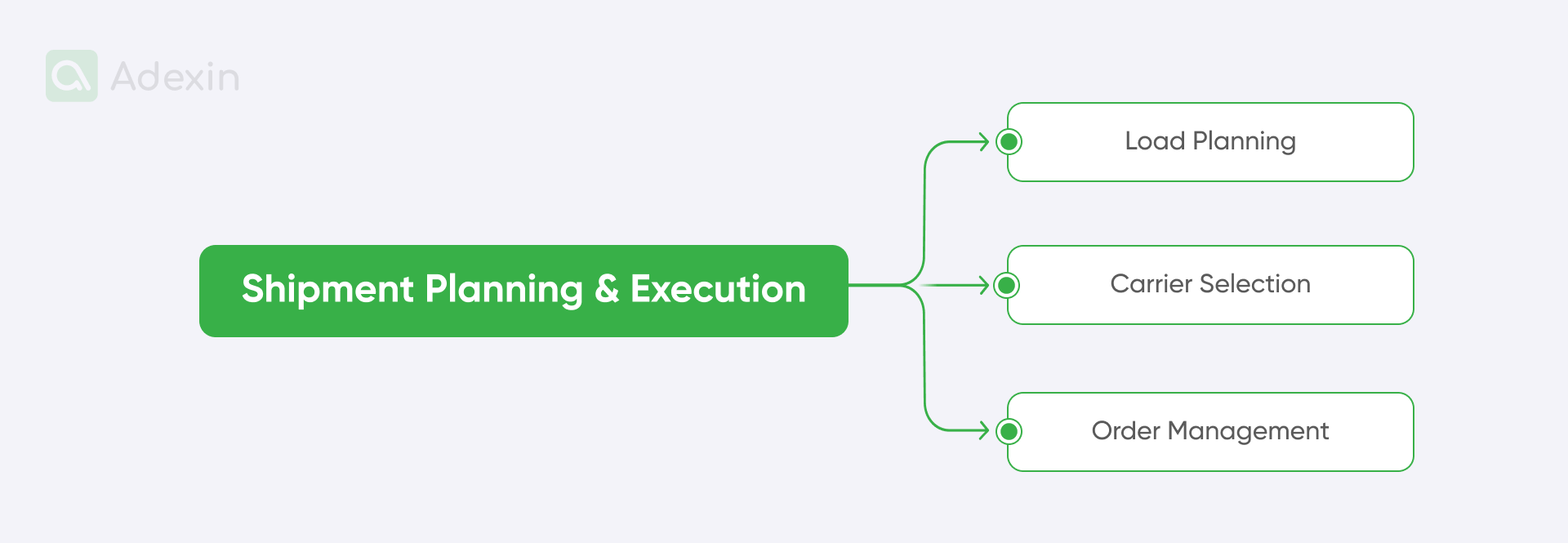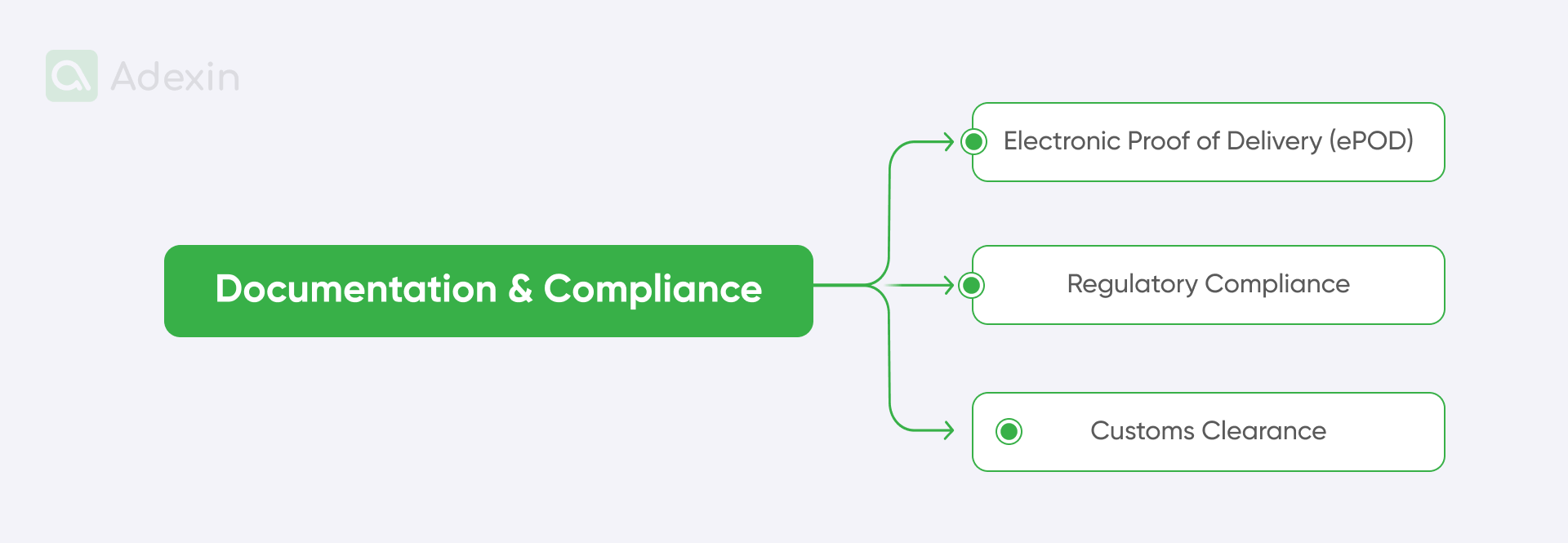A transportation management system in logistics is software that allows to processing of outbound operations for planning shipments and scheduling carriers. TMS system definition in logistics can be defined by integrated transportation processes with all operations in a warehouse from order processing, dock scheduling, and freight planning. By integrating transportation management system functionality into any logistics system we can optimize the fulfillment process to better coordinate locations and inventory levels, shipping points, order management, quantity to hold, and coordinate transport providers.
Indeed, Gartner reports a 15 percent increase in TMS usage in small and medium-sized companies. What's more, it's quite significant that some vendors are reporting more than 20 percent growth in those markets where companies with annual transportation spending of $15 million to $20 million can afford to deploy new transportation management system platforms. This is a 2025 trend that shows the growing value of systematic integration. TMS system integrated with logistics also revenue margins which depend on accurate stock levels. See more in our article about the value of the TMS system for your logistics.
What does the TMS system stand for: the main crucial features for logistics
A TMS system in logistics is software that organizes transport after an order is ready to ship. Modern transportation management system software can deeply integrate into warehouse operations to connect with APIs with warehouse management system or order management systems. They can help with dock scheduling and load planning when it comes to accurately setting out a shipping process for containers or trailers with pallets.
We must not forget that a TMS system is software that can be supplied to transportation and logistics companies as an off-the-shelf solution or a custom-built TMS. The difference is significant, even though we get a TMS in both cases, the custom build provides more flexibility. For example, in our scope, we have already handled numerous projects for transportation companies, where we built an app for truck drivers and a shipping document management platform. In both cases, we utilized various technologies, and companies could benefit from Adexin Tools, which are based on code that allows us to use verified methods to build robust software. It is a bit about us, but later in this article, you can learn more. Let’s jump back to TMS system features as below.
We break down the main TMS system features that are crucial for logistics:
Shipment planning and execution
Load planning. Whenever your personnel struggles with properly loading a trailer, 40-ft, or 20-ft shipping container, the transportation management system can have a custom built-in feature to optimize load capacity and support utilization to minimize empty miles and reduce costs.
Carrier selection. The transportation management system integrated into logistics enables procurement of carrier rates and services to select the best options based on price, speed, and reliability. This feature is highly important as it allows for the integration of a wide network of carriers and the handling of logistics shipments internationally.
Order management. This TMS feature is quite important for the eCommerce industry. It integrates with order management systems to automate shipment creation and track orders throughout the supply chain. So, any order dropped from an online store is visible in the system, and the TMS system can automatically assign it to a carrier.

Visibility and tracking
Real-time tracking. The transportation management system provides up-to-the-minute visibility into shipment locations and status. This is very valuable when it comes to organizing shipments and timely delivery with time windows for unloading/loading. Your customers can get end-to-end tracking for deliveries.
Proactive alerts. TMS can share a real-time update and notify the warehouse or customers about potential delays. Custom features in the transportation management system can help track exceptions, such as missed pickups, delivery issues, and other critical events.
Shipment tracking dashboards. To better organize dock scheduling, the TMS system offers easy-to-understand visualizations of key performance indicators (KPIs). You oversee many metrics, such as on-time delivery rates, delivery exceptions, and cost per shipment.
Cost management and optimization
Rate negotiation and management. In many cases, the TMS system helps facilitate negotiations with carriers and manage contracts to secure favorable rates. Once you get your outlook on transportation fees, you can also better fit the cost of logistics. It is helpful with forecasting and more accurate budget planning.
Cost analysis. It is crucial to have all the data about costs. A transportation management system integrated into logistics helps track and analyze transportation costs across different modes (truck, rail, air, ocean) to identify areas for improvement.
Invoice auditing and payment. Transportation management system integration automates invoice processing and payment reconciliation to reduce errors and improve cash flow. You can also handle better invoice disputes to resolve faster payment issues.
Documentation and compliance
Electronic proof of delivery (ePOD). A transportation management system can enable your business to capture electronic signatures and other documentation for improved accuracy and efficiency. ePOD is incredibly important for delivery confirmation.
Regulatory compliance. Transportation management system integration into logistics helps ensure compliance with relevant regulations, such as hours-of-service regulations for drivers. This is a crucial element for logistics when we want to ensure that staff are ready to go.
Customs clearance. The transportation management system supports preparing and submitting customs documentation for international shipments. It also helps handle customs once a shipment is already in the warehouse. It decreases the time needed for customs clearance consignment that might be already in a warehouse but not yet allowed to be located on the warehouse shelf due to customs.

Integration with WMS and collaboration
API integrations. TMS can integrate many more systems than only WMS software. For example, other systems, such as enterprise resource planning (ERP) systems, order management systems (OMS), and customer relationship management (CRM) systems, improve logistics in many fields.
Customer portals. The TMS system can have a custom-built layer that enables customers to track their shipments and access relevant information. This is a great tool for better collaboration within logistics, as all stakeholders can see what is going on with customers and much more, depending on internal needs.
The TMS meaning in business: benefits for logistics
By leveraging the features of a robust TMS, logistics companies can significantly improve their operational efficiency. It reduces costs and enhances customer satisfaction in today's competitive market.
Below, we outline the main benefits of using a TMS system in logistics:
Reduce transportation costs with TMS
TMS systems in logistics bring lower transportation expenses through optimized routes and improved load utilization. So you can cut costs based on better utilization of container space. Looking for cost savings on transportation, it reduces fuel consumption by minimizing idle time and optimizing driving routes. The transportation management system also minimizes detention and demurrage fees in the long term by improving communication and coordination with carriers and customers.
Improved efficiency and support for transportation operations
The TMS system streamlines logistics operations by automating manual tasks such as order entry, shipment planning, and carrier selection. You get faster order fulfillment, where manual work is significantly reduced with automated data entry, report generation, and other time-consuming tasks. Looking for personnel management, you can benefit from improved resource allocation with better use of vehicles, drivers, and warehouse space.

Higher customer satisfaction and better supply chain planning
TMS software increases visibility into shipment locations and status, providing customers with real-time updates. Your customer can track shipments and delivery times through optimized routes and improved coordination with ePOD. It also boils down to improved customer communication through proactive notifications, personalized service, and online portals. Last but not least, it reduces delivery exceptions by proactively addressing potential issues and minimizing delays.
Increased revenue
A TMS system in logistics improves asset utilization by maximizing load capacity and minimizing empty miles. It also improves overall service levels, leading to increased customer loyalty and repeat business. Logistics businesses can offer new services such as expedited shipping or specialized delivery options. Moreover, TMS software can increase pricing power by demonstrating improved efficiency and providing superior service.
Improved decision-making
Digitization in logistics always helps with data-driven insights into key performance indicators (KPIs) such as on-time delivery rates, cost per shipment, and customer satisfaction. Integrating TMS system capability into logistics allows us to get advanced analytics to identify trends, predict future demand, and optimize resource allocation. Along with data comes benefits with improved forecasting to better anticipate future needs and adjust operations accordingly.
Are you in search of a reliable tech partner?
Adexin can help with advanced logistics solutions
Contact usFinale takeaway
There is no doubt that logistics needs a robust transportation management system (TMS). According to Gartner, it has become a fact that it is no longer a luxury but a necessity. By integrating TMS functions into their operations, even small and medium-sized companies can streamline processes, reduce costs, increase customer satisfaction, and gain a competitive advantage. Get ready with Adexin to unlock the full potential of your logistics operations. Contact us today for a free consultation to learn how our state-of-the-art TMS solutions can transform your business.

